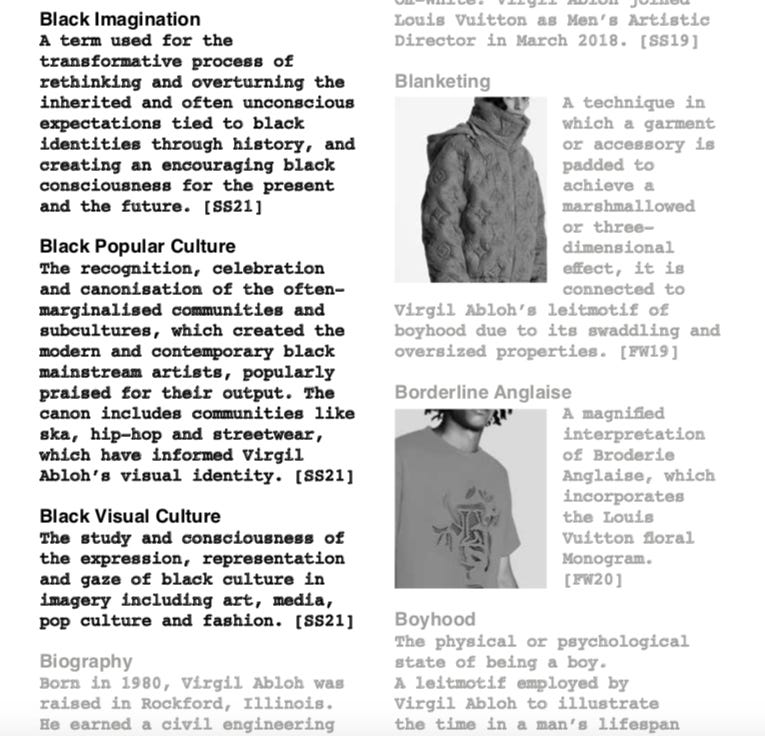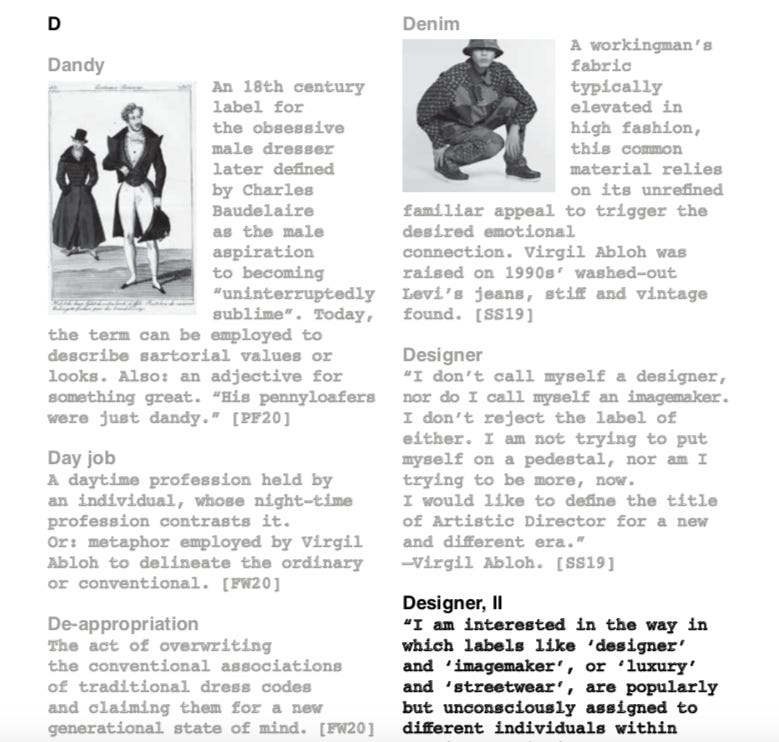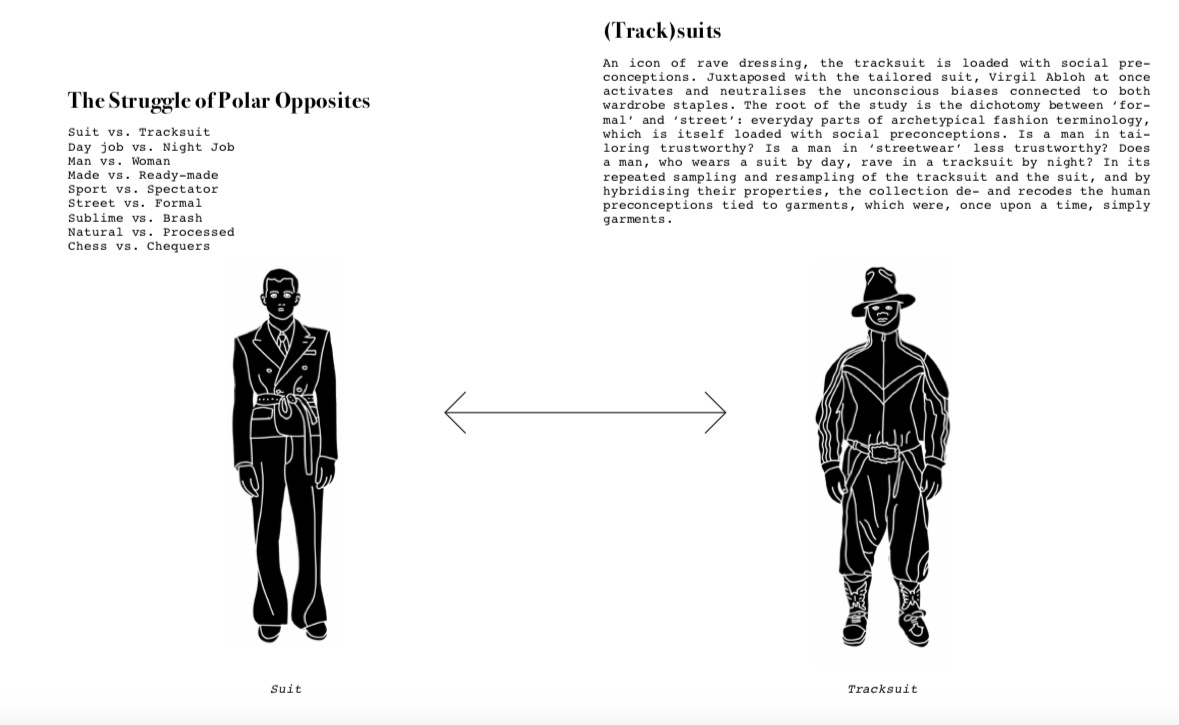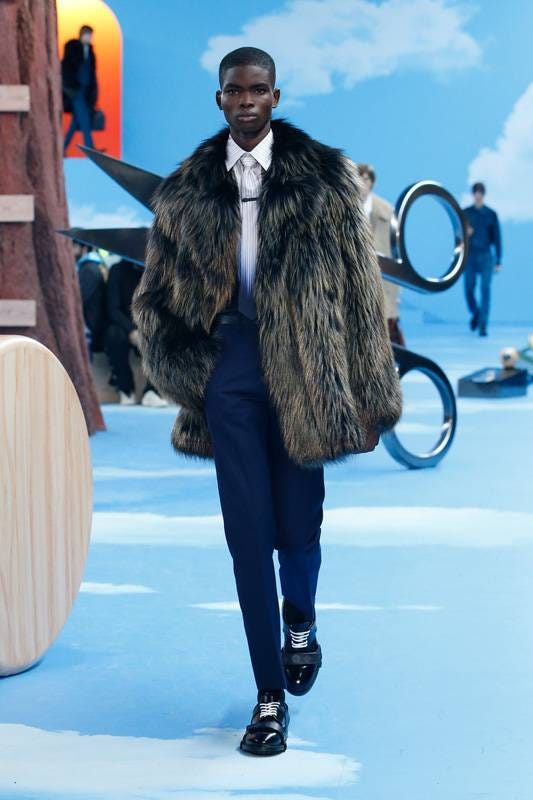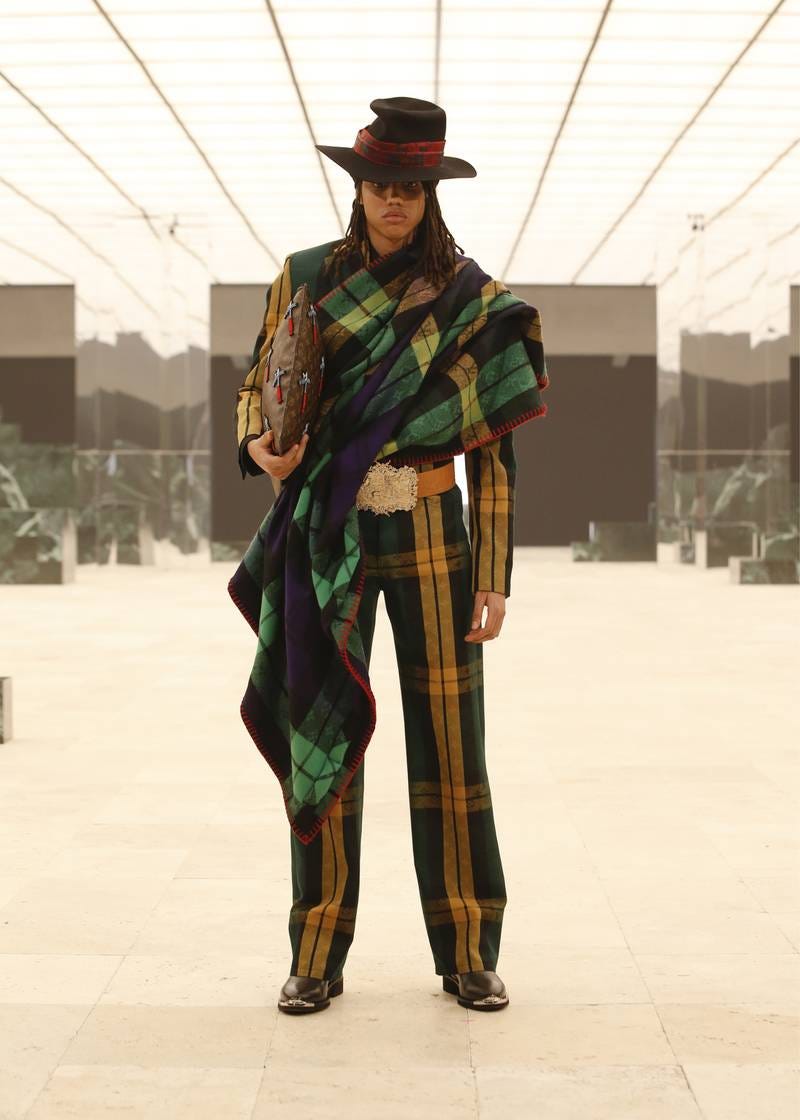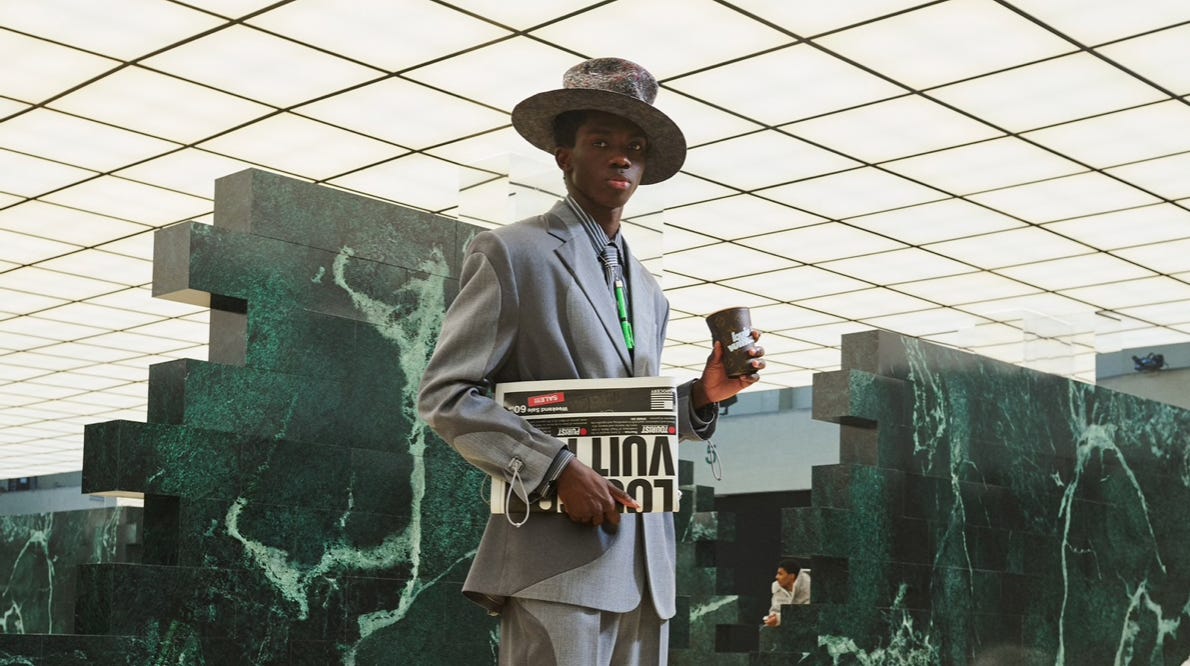the forgotten Dandy - part 2
or how Virgil Abloh embodied an institutional anti-conformism at Louis Vuitton
Abloh has this awareness on many levels, and his ambition to educate, include and create down-to-earth aspirations in one sense, and far-reaching ones in many others, are similar in many ways to the dandy's ambition. “Tourist versus purist”, the slogan written when he arrived at Louis Vuitton in 2018, moreover returned to the bags during this collection: "A tourist is someone who wants to learn, who wants to see the Eiffel Tower when he comes to Paris. A purist is someone who knows everything about everything".
Abloh exercises his position from both prisms: the outsider turned insider; the man with the power to bring young people with him into the former exclusion zone of Haute Couture. This ambition to educate is reflected in the notes he writes after his Louis Vuitton shows. Dozens of pages, in the form of a guide, dictionary or manifesto, serve as quasi-academic supports for the reader. Over and above the inspirations, these explanatory notes40 decipher the sets, soundtracks, motifs and materials used, accompanied by sketches, 3D models and drawings that enable the reader to follow the thread of his creation.
In 1962, Roland Barthes wrote that the phenomenon of dandyism, essentially dead, was brutally killed by fashion itself, and is now no more than the memory of an aesthetic, a lifestyle and a technique that reached its apogee in the 19th century, profoundly marked by the figures of Beau Brummell or Oscar Wilde.41 Aesthetes to the point of becoming deliberately self-referential, these characters radicalized the attire of the distinguished man, displaying a cult of image that ranged from the moistening of their gloves so that their hands could better impregnate them, to the near-maladic fixation of their ties for hours on end.
Knowing how to make the most of his time, the dandy knows how to tame the zeitgeist and make it his own. If historical dandyism, as Barthes defended it, has disappeared, these hints are nevertheless easily discernible, as heroic protagonists successfully adapting to societal mutations.
These personalities have appropriated and played with the codes of dandyism on numerous occasions, often qualified as such more by their antics and lifestyle than their mere style of dress. "I only put my talent into my work. My genius is in my life..." as Oscar Wilde wrote, but history tends to remember only the influence that these precursors, who managed to capture the zeitgeist, held. Today, more than ever, the multiplicity of distribution channels and media allows even greater control over one's image, and consequently, to extend one's field of influence. The “monetization” of this image is more accessible and becomes more commercial with a greater number of people. The distinctions of these figures and the rebellions they inspire arouse the admiration of observers, leading to the creation of communities of “fans” who seek to capture the essence of these personalities and follow them in their institutional anti-conformism.
“I think it’s safe to say that Virgil Abloh’s work changed the culture around fashion and within fashion. His work and presence in the industry allowed many to see first-hand the ways in which fashion is interconnected with culture and to other practices and industries. He used fashion as a cultural tool to engage with fans, customers, and peers across different disciplines, and his collaborative approach encouraged a new generation of designers and fashion lovers to think differently about how they can approach fashion and become a part of the industry. Virgil’s nature as a polymath was also inspiring and aspirational, he followed all of his passions at the same time and by doing so enabled many to do the same.”
– Jose Criales-Unzueta, journalist
These media sacralizations legitimize the “mythological” part of the discourse created around designers, in perfect accord with the original notion of dandyism, between advertising speeches, remarks reported by admirers and entourages close to the brands. As in the case of Beau Brummell, it's difficult to deal with the objective part of these discourses, which praise figures who are already deeply admired. Already followed by a strong community since the launch of his Off-White brand, Virgil Abloh has seen his influence grow with his appointment as head of the Louis Vuitton menswear collection. A symbol of success within a predominantly white system, Abloh embodies a dream come true for many, often described by his peers as historic. His collaborations with various brands and the diverse artistic projects he multiplies amplify his magnetism, and enable his fans to access, on a small or large scale, the figure he now embodies.
“Virgil is the perfect Renaissance man. He is stimulated by the world and the world is in turn stimulated by him.”
- Edward Enninful, editor-in-chief, British Vogue
Whether it's clothing collaborations for his own brand or Louis Vuitton (including the Nike x Louis Vuitton collection), Abloh is multiplying his universe, both luxury and mainstream. His collection of designer furniture at the Galerie Kreo in 2020, or posthumous exhibitions (Coming of Age at the Fondation Louis Vuitton in 2022 or LV Dream in 2023) are striking examples of his impact, which opened up the breadth of his research and creations under his artistic direction. Here, too, we can associate the figure of Des Esseintes, who tirelessly and effervescently set about collecting works of all kinds, in a quest for beauty. In the same way, Virgil Abloh's abundance of projects is akin to this unbridled quest for creation, on all artistic levels.
In a luxury sector more standardized than ever, between hasty departures and weariness of a system that has become more frantic than creative, Virgil Abloh has embodied this “last glimmer of heroism in decadence”, navigating between eccentricity and originality, anti-conformism and convention, these contemporary dandies leave behind the myth of their creation.


